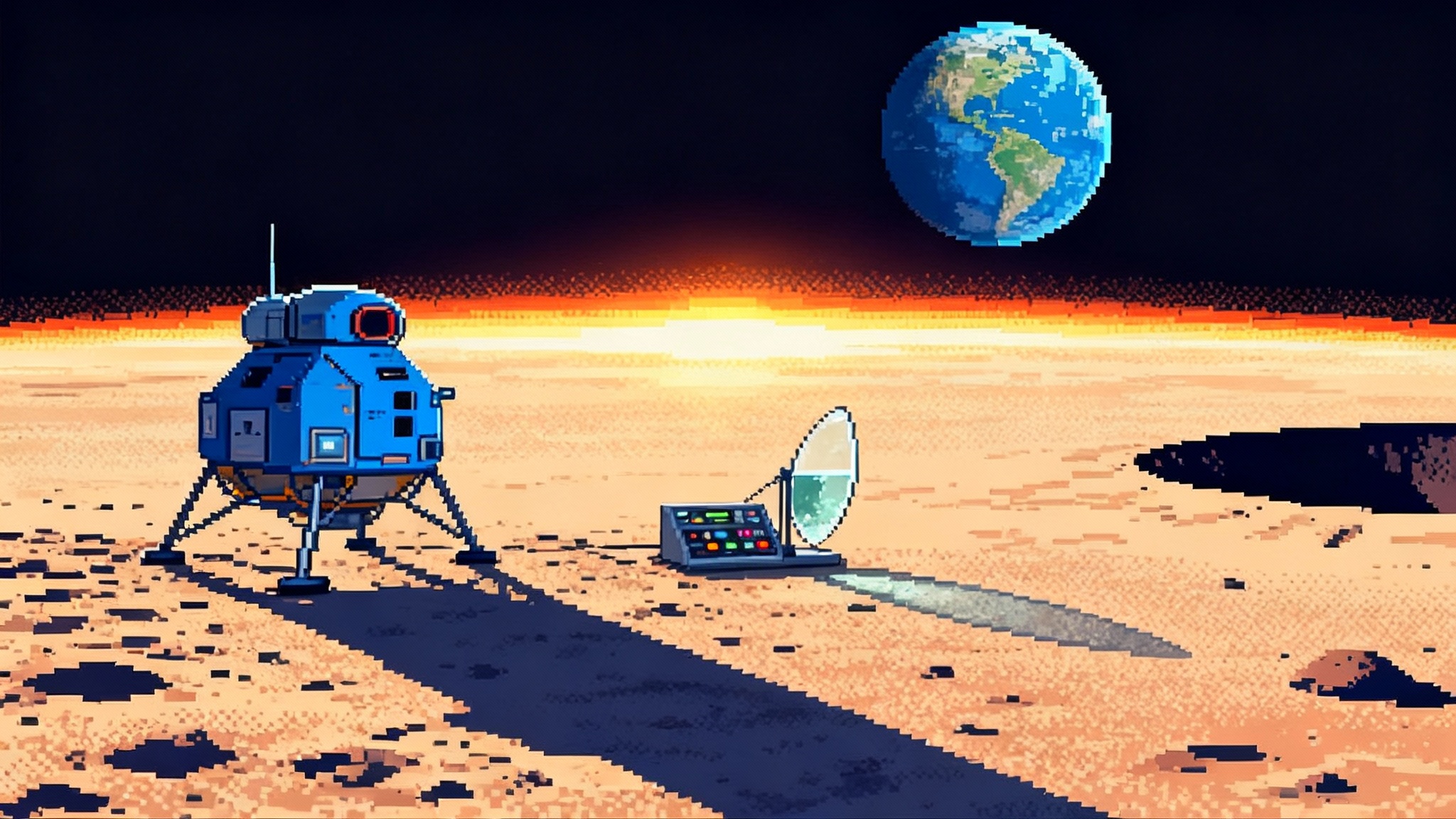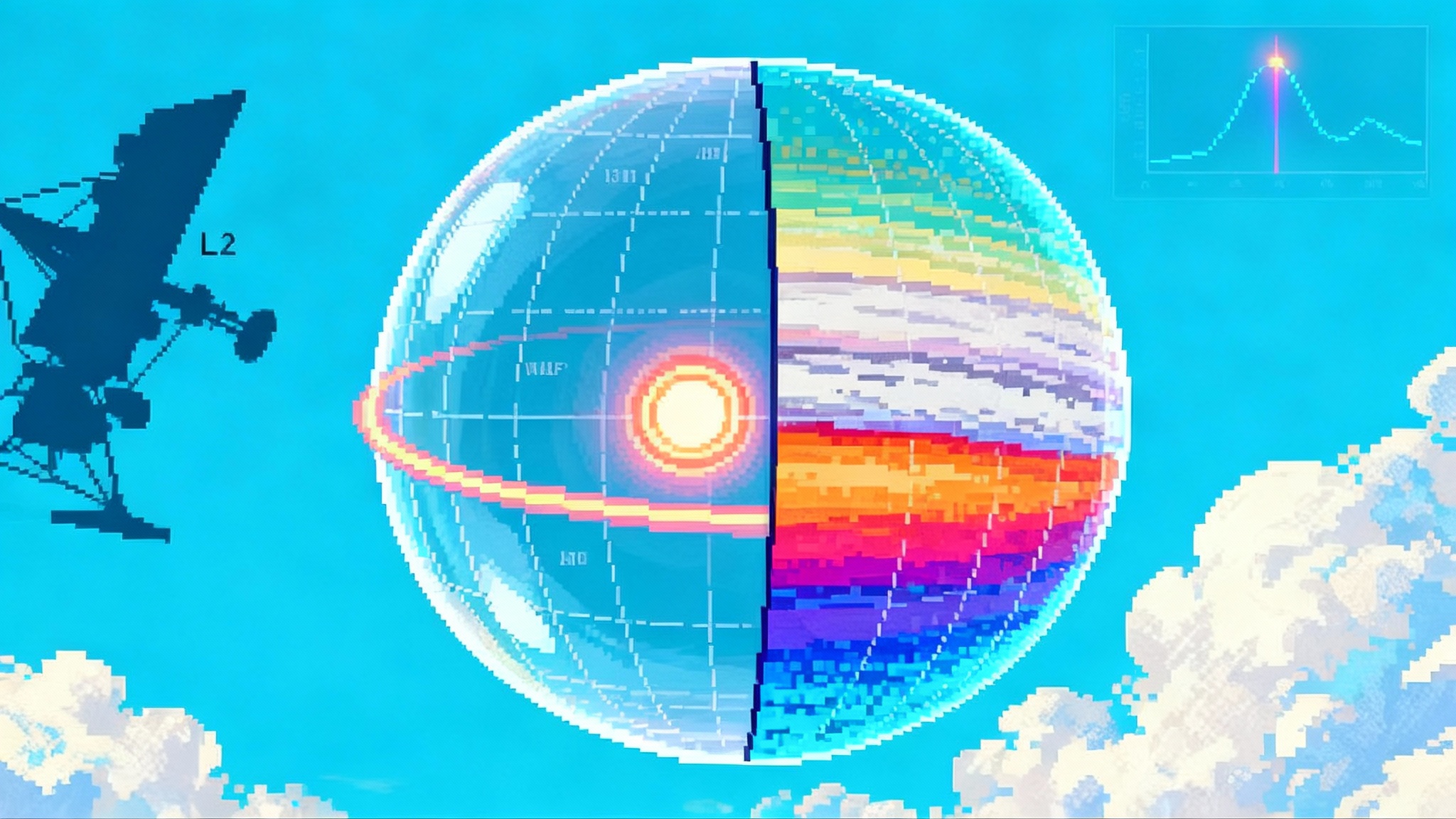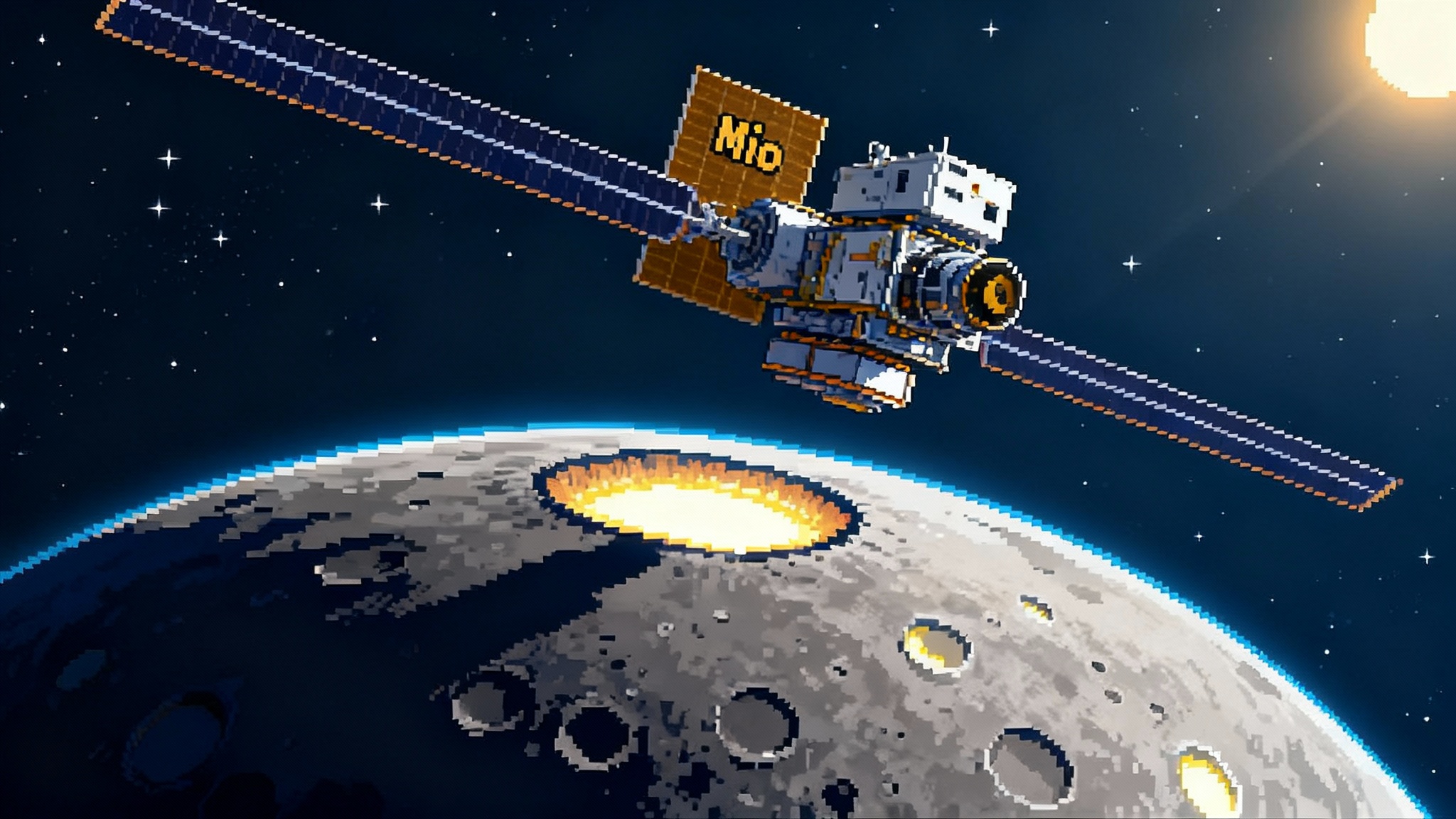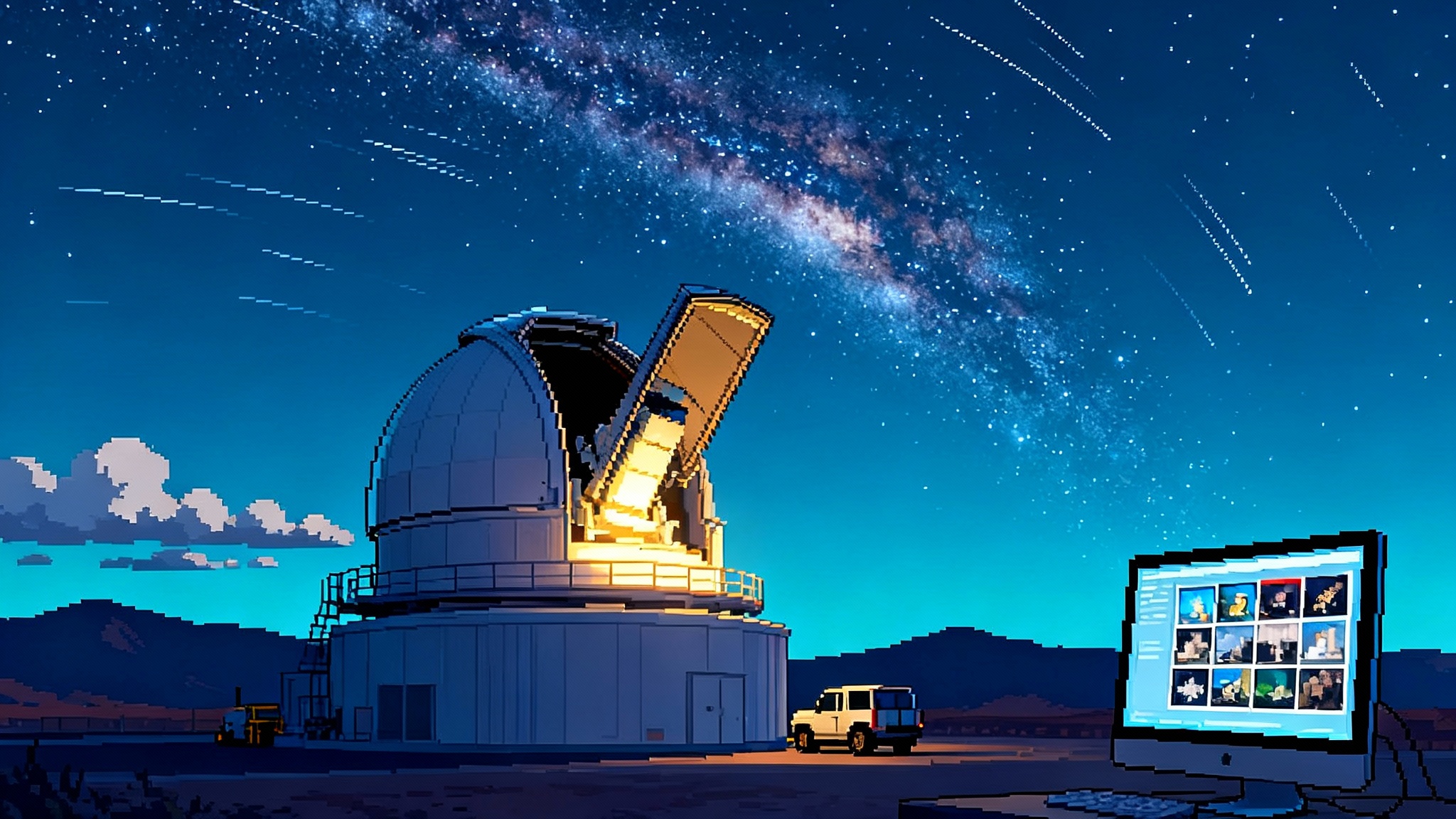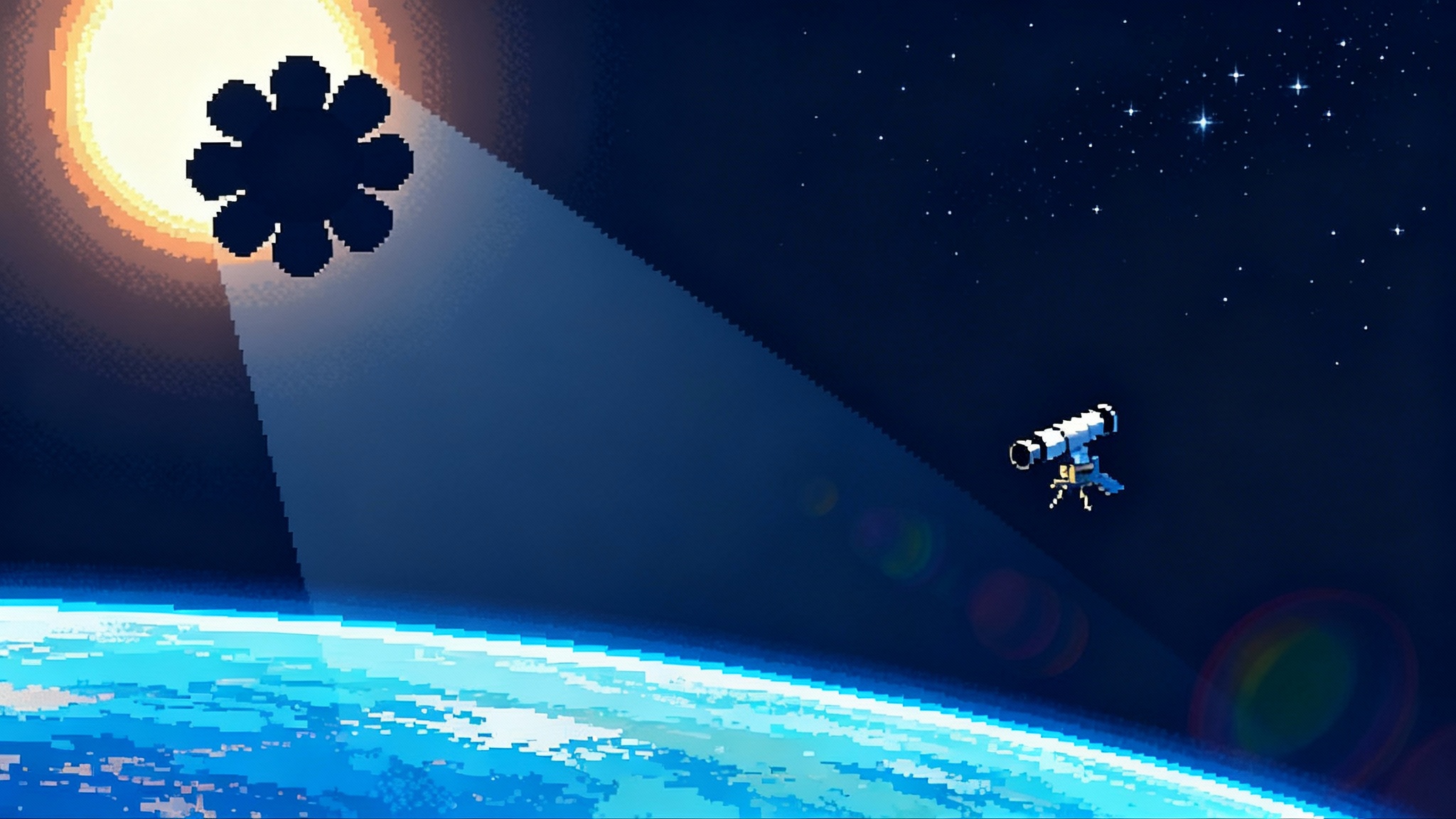3I/ATLAS Turns Mars to Jupiter Into a Pop-Up Observatory
As 3I/ATLAS sweeps past Mars toward Jupiter, space agencies are syncing Mars orbiters, ESA’s JUICE, and NASA’s Europa Clipper to watch its coma and tails in real time. The goal is a reusable playbook for the next interstellar visitor.

A comet turns the Solar System into a lab
This month, an object from another star is making us act like one community of worlds. Interstellar comet 3I/ATLAS has swept past Mars and is now climbing into the field of view of the European Space Agency’s Jupiter Icy Moons Explorer, better known as Juice. Space agencies are treating the moment like a pop-up, interplanetary observatory: Mars orbiters and rovers are pointing outward; Juice is preparing a carefully rationed set of looks; and teams on Earth are coordinating with NASA’s Europa Clipper to try for a rare taste of the comet’s ion tail. The goal is simple and urgent. Catch the action while it is happening, share targeting data fast, and build a template that can be reused for the next interstellar visitor.
If that sounds ambitious, it is. 3I/ATLAS is only the third confirmed interstellar object after 1I/ʻOumuamua and 2I/Borisov, and its path offers unusual geometry for spacecraft already scattered across the inner Solar System. It reached perihelion on October 30 at a distance just inside Mars’s orbit, was closest to Mars in early October, and will not come close to Earth. That is why the best seats are not here at home. From Mars and from spacecraft between Venus and Jupiter, engineers have a clear, forward angle on the comet’s coma, tail, and the plasma wake it is dragging through the solar wind. For the first high-stakes facts, see NASA’s 3I/ATLAS dossier.
Why the campaign is different
Think of this as a rolling news van that spans planets. A comet changes fast, sometimes in hours. To keep up, teams have agreed to a few simple rules that matter more than any single instrument:
- Share the geometry early: a standard set of pointing files from the JPL Horizons system and agency ephemeris teams went out in late September and were updated through perihelion.
- Keep the lines open: mission operations rooms for Mars orbiters, Juice, and Europa Clipper have a shared schedule for short observation windows, plus a standing daily handover between European Space Operations Centre and NASA’s Deep Space Network. The push to harden cross-agency comms builds on efforts described in deep-space laser internet begins.
- Publish quicklook products: images and spectra that still need calibration are flagged as preliminary but pushed quickly to planners at other missions so they can refine their own sequences.
The result is not one perfect image. It is a stitched-together story about how an interstellar comet behaves when it first tastes our Sun, told from multiple vantage points.
The Mars segment: cameras built for rocks, turned to sky
- What flew: ESA’s ExoMars Trace Gas Orbiter and Mars Express, plus NASA’s Mars Reconnaissance Orbiter and the rovers Curiosity and Perseverance.
- What they measured: coma shape and brightness evolution from long exposures; the direction and curvature of the dust tail; any short-term outbursts; and, if geometry allowed, color ratios that hint at gas species.
- When it happened: closest geometry for Mars orbiters was around October 3 when the comet was roughly 30 million kilometers from Mars.
ExoMars Trace Gas Orbiter used its CaSSIS camera, which normally shoots the bright Martian surface, to integrate multiple five second frames and tease out the faint, fuzzy coma of 3I/ATLAS. Mars Express pointed its high-resolution stereo camera at the same sky sector to cross-check the tail’s direction. The pair gave the campaign two important benefits. First, they nailed down the tail’s orientation from a vantage point far from Earth, which reduces ambiguity when modelers reconstruct the three-dimensional geometry. Second, by stacking many images over a few nights, they captured how the coma expanded and sharpened as the comet raced through perihelion. This complements the growing Mars operations playbook highlighted in ESCAPADE readies Mars sprint.
Rovers joined from the ground. Perseverance and Curiosity can use their color cameras to measure how the comet’s light is distributed across different wavelengths. Even a marginal detection helps. If the coma brightens more at shorter wavelengths, that hints at gas emissions and tiny dust grains; if it skews redder, the coma may be dust-dominated. From a planetary-defense perspective, that is not trivia. Grain size sets how solar radiation pushes dust; it affects tail length, tail curvature, and how a cloud of fragments would spread if a fragile comet broke up.
NASA’s Mars Reconnaissance Orbiter can potentially contribute very deep images by letting its HiRISE camera stare off-planet. Even when those images take time to process and release, they provide precise astrometric points that tighten the comet’s orbit solution and help everyone aim.
- When to expect results: the first stacked images from Mars orbit were released in early October; additional processed products and joint analyses typically take weeks to months. Expect more refined coma and tail models to appear from late November into January as teams merge Mars and Earth-based datasets.
The Juice segment: a narrow window, but the best seat
- What is happening now: Juice is executing a carefully limited observing campaign between roughly November 2 and 25. Thermal constraints dominate. The spacecraft is close to the Sun, so it is using its large high gain antenna as a heat shield and sending data back over a slower link. That forces brief daily looks, small data volumes, and smart choices.
- What Juice will measure: a little bit of everything. Cameras will map tail structure; a visible and infrared spectrometer will look for signatures of water and carbon-bearing molecules; the ultraviolet spectrograph will search for emissions from gas species; and the particle environment package will sample solar wind ions and electrons where the comet’s ion tail may be perturbing the flow.
- Why it matters: no one has ever watched an interstellar comet this closely from a deep-space vantage point while it is still this active after perihelion. Tail structure and gas emission lines here tell us how volatile-rich the nucleus is and whether its ices look like the ices that formed our own Oort Cloud comets.
Because of the thermal geometry and the long radio path around the Sun, Juice’s data will trickle home late. ESA has already told the community to expect downlinks of comet observations to begin in February 2026 once the spacecraft can resume high-rate communications. The agency’s summary of the plan and constraints appears in ESA’s detailed Juice FAQ.
- When to expect results: first previews from stored Juice data should arrive in February 2026. Look for a wave of joint papers after teams cross-calibrate Juice images and spectra with Mars and ground observations in spring and summer 2026.
The Europa Clipper opportunity: a possible skim through the ion tail
-
What might happen: depending on the exact alignment of the comet, Sun, and spacecraft, Europa Clipper could cross through the outer regions of 3I/ATLAS’s ion tail in the window around late October into early November. That would not be a flyby of the nucleus. It would be a sampling of the charged-particle wake stretched by the solar wind.
-
What Clipper would measure: its plasma instrument can count and characterize ions and electrons; its magnetometer can look for a draped magnetic field signature, a classic sign that the solar wind is wrapping around a cometary outflow; and its ultraviolet spectrograph could look for faint emissions from excited atoms and molecules in the tail.
-
Why this matters: an ion-tail skim would give us the first in situ taste of an interstellar comet’s charged environment, even without an escorted probe. It would also stress-test how quickly a flagship mission in cruise can pivot to an external target while staying within safety and power margins.
-
When to expect results: if the geometry cooperates and Europa Clipper secures useful data, preliminary findings could be shared internally within weeks for campaign planning, with public results following after standard calibration and review in early 2026.
How the pieces fit together
A single image of a comet tail can be misleading. Seen from Earth, a tail is a flat, luminous streak. From Mars, the same tail points at a slightly different angle. From Juice, you get yet another perspective and a chance to watch how the solar wind shapes the ion tail in real time. Put those views together and you can separate the dust tail, which follows the comet’s orbit but curves under radiation pressure, from the ion tail, which points more directly away from the Sun and can kink under magnetic field changes.
The campaign also connects remote sensing to in situ sampling. Cameras and spectrometers estimate how much water and carbon monoxide the nucleus is shedding. Plasma instruments and magnetometers tell you how that outflow changes the local space environment. Together, those measurements teach us how big the comet’s active area is, how rapidly it releases gas, and how gas and dust respond to bursts of sunlight. That is physics we need if we want to understand whether interstellar visitors are fragile snowballs that shed layers like an onion or crusted bodies that vent through a few durable fractures.
What each asset is trying to nail down
- Mars orbiters: coma shape, tail direction, and changes over hours and days. These set constraints on the nucleus’s rotation, active regions, and the size distribution of dust grains.
- Mars rovers: color ratios and timing from the Martian surface that help discriminate between gas-rich and dust-dominant activity. Even low signal detections refine outburst timelines.
- Juice: spectra that identify volatiles and map how activity changes with sunlight; images that track tail fine structure; particle data that capture how the ion tail interacts with the solar wind.
- Europa Clipper, if geometry allows: counts of charged particles and a magnetic signature of tail draping; ultraviolet emissions that trace atoms and simple molecules in the wake.
Each fills a gap the others cannot. You cannot sample ions with a camera. You cannot measure subtle gas emissions in the ultraviolet with a rover meant for rocks. You cannot get multi-angle tail geometry from a single vantage point on Earth. The value comes from composition, geometry, and plasma being measured at once.
When the science lands
- Now through mid November 2025: more Mars-orbiter stacks and any rover detections, plus early post perihelion ground-based observations as the comet rises before dawn for northern observers.
- December 2025 to January 2026: cross-planet geometry fits that merge Mars and Earth-based images and refine tail models; first hints, if any, from Europa Clipper cruise instruments.
- February 2026 onward: Juice downlinks begin, releasing the highest-value deep-space datasets of the campaign; joint analyses follow through mid 2026 as teams cross-calibrate spectra and images.
That staged arrival is not a flaw. It is the cost of observing with spacecraft that were built for other destinations. The payoff is that we get a coordinated experiment without launching anything new.
Why this template accelerates discovery
- Faster targeting: agreeing to common ephemerides and sharing them at the start cut days off scheduling. That time goes straight into the signal-to-noise of the images and spectra.
- Cross calibration on day one: with multiple spacecraft pointing at the same volume of space, teams can validate exposure times and spectral settings quickly, then reuse the best settings on later passes.
- Data triage that works: quicklook datasets feed other observers, not just press releases. A faint outburst seen from Mars orbit can tell Juice to bias a look toward the tail edge the next day.
- Reduced uncertainty: multi-angle geometry breaks degeneracies that would otherwise persist for months. Instead of waiting for the comet to climb away from the Sun in our sky, we get that second viewpoint from Mars immediately. For how rapid-response pipelines change discovery, see Rubin’s year of fast discovery.
A practical example: suppose Mars images show a brief brightening that sweeps down the tail. Within a day, Juice can try to catch the same structure. If Juice sees a matching kink in the ion tail at the same time, we can separate dust and plasma physics in a single event. That is exactly the kind of time-resolved, multi instrument story that has been rare outside of purpose built missions like Rosetta.
Why this strengthens planetary-defense readiness
Planetary defense is not only about finding objects on Earth-crossing paths. It is also about moving from discovery to characterization fast. Interstellar objects are perfect rehearsals because they offer minimal warning and odd trajectories. This campaign builds muscle in four areas that matter for any future threat or fast mover:
- Playbook: pre approved observation macros for common instruments. If the geometry is favorable, teams can load a proven sequence rather than writing one under pressure.
- Scheduling: a standing carve out on the Deep Space Network for cross mission critical windows. Minutes matter when you are juggling sunlight, thermal limits, and spacecraft orientations.
- Data plumbing: automatic pipelines that convert raw frames into quicklook products usable by other missions within hours. That is how you go from one telescope’s detection to a multi spacecraft dataset in a single rotation of the Earth.
- Modeling loop: a shared toolkit that ingests geometry, images, spectra, and plasma data as they arrive, updates the activity model, and spits out new pointing predictions. That closes the loop in near real time.
The next time a small object is discovered on a worrying path, or a comet fragments unexpectedly, the same template can move telescopes and spacecraft in concert. Even if the risk is low, the cost of practicing is tiny compared to the time lost inventing a process on the fly.
What to watch next
- Mars-to-Earth handoff: as the comet pulls away from the Sun in our sky this month, ground-based telescopes will fill in the light curve while Mars data are still being analyzed.
- Juice’s trickle of gold: data will not arrive until February 2026, but the spacecraft is in the best place to see an active interstellar comet soon after perihelion. Expect those spectra and images to anchor the whole campaign.
- A tail crossing, if it happens: any detection by Europa Clipper of a draped magnetic field or a bump in charged particles would be a first for an interstellar comet’s wake.
- The synthesis: by mid 2026, look for papers that combine Mars imaging, Earth-based spectra, Juice data, and any Europa Clipper measurements into a single physical model of the nucleus and its activity.
The bigger picture
There is a reason ESA is building Comet Interceptor to wait in deep space for a fresh target. Surprise visitors are precious. They carry material from other birthplaces and other epochs. We will not always have a spare probe ready to meet them. But after 3I/ATLAS, we will have something almost as valuable: a tested way to turn the Solar System’s existing fleet into a coherent observatory on short notice.



